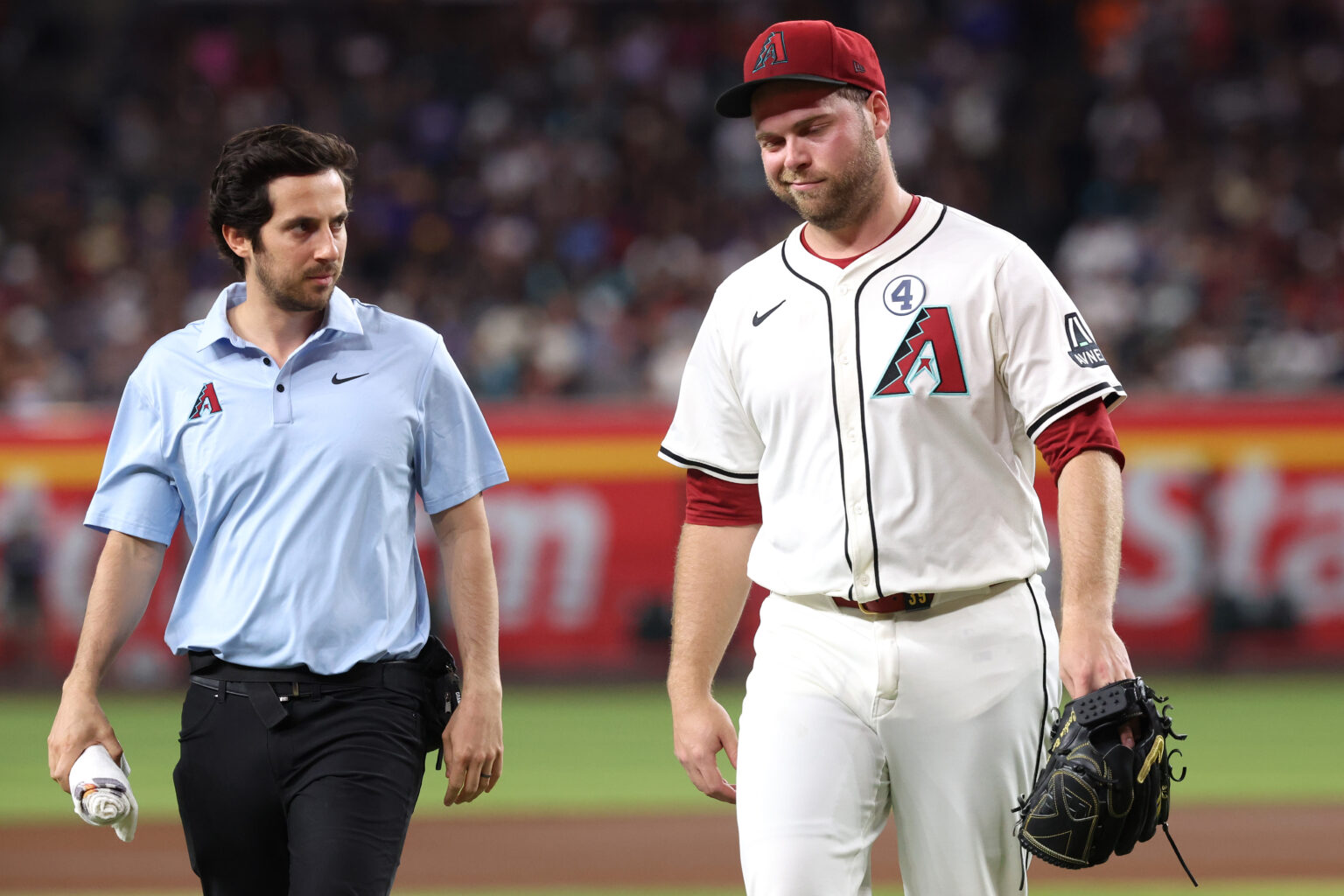Impact of Corbin Burnes’ Injury on the Arizona Diamondbacks and the Broader MLB Landscape
When Arizona Diamondbacks’ star pitcher Corbin Burnes left a pitch high to CJ Abrams last Sunday and immediately signaled to trainers, the baseball community instinctively understood the gravity of the situation. The subsequent images of Burnes expressing concern about his elbow only confirmed fears-this was a significant injury. Known for his durability since entering the league in 2021, Burnes’ self-awareness indicated he recognized the severity of his condition.
Confirmed Diagnosis and Surgical Intervention
On Friday, Diamondbacks manager Torey Lovullo officially announced what many had suspected: Burnes, 30, will be sidelined for the remainder of the 2025 season and most of 2026 due to needing Tommy John surgery. The procedure is scheduled for next week. This injury not only halts Burnes’ current season but also casts a shadow over his future, as recovery from Tommy John surgery typically requires extensive rehabilitation.
Immediate Consequences for the Diamondbacks’ Rotation
The ripple effects of Burnes’ injury are profound, especially for a team striving to secure a playoff spot. Arizona’s pitching staff, already underperforming despite Burnes’ contributions, faces a critical challenge. Zac Gallen, the team’s other ace, has not been his usual dominant self, and promising young right-hander Brandon Pfaadt has struggled significantly. Meanwhile, Eduardo Rodriguez, who just returned from injury, remains an unproven commodity.
Given these circumstances, the Diamondbacks are likely to seek additional starting pitching help before the trade deadline. With several teams still uncertain about their 2025 plans, the supply of quality starters remains limited, increasing the urgency for Arizona to act.
Broader Organizational and Financial Implications
Burnes’ injury could influence Arizona’s strategic approach beyond this season. Owner Ken Kendrick, who has recently prioritized winning, might reconsider his financial commitments if the team’s playoff hopes diminish. If the Diamondbacks fall out of contention-an increasingly likely scenario without Burnes-the club could pivot toward a rebuild, trading key players such as first baseman Josh Naylor, third baseman Eugenio Suarez, Gallen, or Merrill Kelly. These trades could generate significant salary savings, easing financial pressures.
Furthermore, Burnes’ absence complicates the team’s offseason planning. Gallen, a pending free agent, is expected to explore the open market, as will Kelly and Jordan Montgomery, who also underwent Tommy John surgery this year. With only Rodriguez, Pfaadt, and Ryne Nelson (who has started three games this season) as confirmed starters, Arizona faces the necessity of acquiring multiple pitchers to remain competitive in the National League West.
The 2024 Starting Pitching Market: Opportunities and Challenges
The upcoming offseason presents a wealth of options for teams seeking starting pitching. Top-tier free agents like Gallen, Framber Valdez, and Dylan Cease headline a class that also includes Ranger Suárez, Chris Bassitt, and Zach Eflin-many of whom could opt out of their current deals. The increased demand for starting pitchers, driven by injuries and team needs, will likely intensify competition in the market.
The injury to Burnes also impacts the trade landscape. With more teams potentially looking to sell, Arizona could find itself in a position to acquire valuable assets or, conversely, become a seller itself. If the Diamondbacks choose to trade, players like Gallen, Suarez, Naylor, or Kelly could become highly sought-after targets for postseason contenders seeking to bolster their rotations or add power and experience for a playoff push.
The Postseason Outlook and Strategic Considerations
Arizona’s current underperformance mirrors the struggles of other traditionally competitive teams like the Boston Red Sox, Atlanta Braves, Baltimore Orioles, and Texas Rangers. These clubs are aiming to turn their seasons around in the final months to avoid the necessity of a deadline sale. The more teams that succeed in rejuvenating their rosters, the higher the demand for Arizona’s assets will become.
Historically, the Diamondbacks have demonstrated resilience. In 2023, they found themselves two games below .500 in August but ultimately advanced to the World Series-a testament to their ability to rally. However, without a Cy Young-caliber pitcher like Burnes, orchestrating such a comeback becomes significantly more challenging. The current situation suggests that the “contending vultures” are circling the desert, ready to pounce if the team’s fortunes decline further.
Conclusion: A Turning Point for Arizona and the MLB Playoff Race
Burnes’ injury marks a pivotal moment for the Diamondbacks, influencing their immediate roster decisions and long-term strategic planning. It also reverberates across the league, affecting trade dynamics and postseason prospects. As teams scramble to adjust their rosters, the coming months will reveal how resilient Arizona can be and whether they will pivot toward rebuilding or rally for a late-season surge. The injury underscores the unpredictable nature of baseball, where a single setback can reshape the entire landscape of the postseason race.

